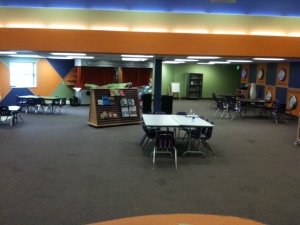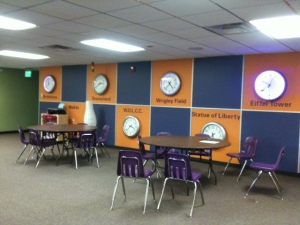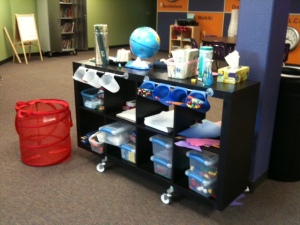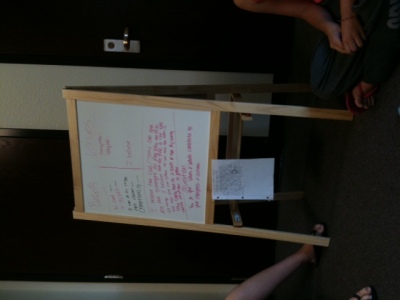Technology: the savior of education?
In 2009, I left teaching. I didn’t do it because I was fed up with the system, or because I didn’t like my job. Quite the opposite. I really loved being a computer teacher. I loved the freedom of writing my own curriculum every day, and getting to know my students. I had a great time helping other teachers learn how to use technology, and coming up with ideas for how they could integrate it into their classrooms. In 2009, I left teaching for health reasons. I have auto immune disorders (Rheumatoid Arthritis and Raynaud’s Syndrome) and in 2009, my rheumatologist recommended that I take a year off to see if my body would stop attacking itself. Get away from the germs the wreak havoc on the system.
So, that is what I did. I took a year off, fully anticipating that this little experiment would not work and that I would be back in the classroom by 2010.
In 2008 (I know, I’m doing this in the wrong order!), I was teaching my students how to build a website using Wix. This is a WYSIWYG (what you see is what you get) platform, but also allowed for some basic HTML embedding and tweaking. I was demonstrating for students how they could embed a Google Map onto their websites and asked the question, “if I wanted to put a map of the capital of the United States on my website, what would I need to type in?” Blank. Stares.
To clarify, these were 10 and 11-year-old students who are living IN the United States of America. I tried again, “You guys! The capital of the United States, you know, the country we live in?” At this point a few hands raised. “New York?” “San Francisco?” This was one of those face-palm teacher moments. In the interest of time, I gave them the answer. This scenario happened with 2 more classes. Out of 74 fifth grade students, not one of them knew the capital of their own country!!! At this point I started to panic a little. How could our social studies curriculum fail to mention the capital of the United States? I decided that I was going to take all of the curriculum home over the summer and create supplemental guides using technology to help teach what wasn’t in the curriculum. I didn’t stop at social studies, I took the reading, writing, math, and science curriculum home for kindergarten through fifth grade. The back of my MDX filled, I had a goal: to leverage technology to solve this problem.
As I poured over pages and pages of curriculum, one thing became abundantly clear…this was not a problem with the curriculum. At least not in the way I had assumed. It was all there. The kids had even done worksheets and taken tests on the information! When it came time to retrieve the information for a practical purpose, they couldn’t do it. Analyzing the curriculum, I could see why. The way that these skills were being taught was not going to reach my students. I knew these kids. I had taught them for years. As I looked at what the curriculum offered as “learning” I knew that it wouldn’t work for the majority of the students I saw each week in my computer lab. These are brilliant kids, but the only thing that the curriculum required of them was that they look at something, and then regurgitate what they had seen right back on paper. None of it ever had to take long-term residence in the brain. It went directly from the eyes to the hand. My pursuit of a technology supplement guide took on a new goal: take what was in the curriculum, and use technology to bring the learning to life. I had the added benefit of knowing each of the kids I was writing this for. I had their faces in my mind as I wrote these technology guides. I could picture their excitement over learning with what I was pulling together.
Fast forward again to 2009. I hadn’t finished the tech guides, so I was hired as a consultant to finish them for the remainder of the curriculum. I picked up a few other consulting gigs at other schools in the area. As I went through their curriculum I realized that this wasn’t a localized problem. This was a one-size-fits-all problem. At the end of the day, the real trouble was that curriculum isn’t designed for the individual, but for the masses. And in creating for the masses, it completely forgot its goal of teaching students. Who are individuals.
One day as I was working on these technology supplement guides and flipping through curriculum, a song came on Pandora (internet radio) that I had never heard before. I frantically looked for a sticky note to jot down the name of the artist. I stopped for a minute after I got the artist’s name down (Zee Avi, for those who are interested), and had a true geek out moment over how far technology had come. I marveled at the way that technology was so advanced that it could predict what music I would like, all based on one piece of information. It felt like a terribly intimate thing for technology to be able to do (particularly because at the time, I had no idea how the background technology worked!). In the midst of my geeking out, I had a thought: what if curriculum worked more like Pandora? What if we could input one piece of information about a student, and have technology predict ways they might like to learn? I could not shake this idea, and Tweeted it out. My PLN instantly retweeted that thought. I emailed an app developer in Australia that I had been working with and asked if technology was advanced enough to do something like that with curriculum. His response was somewhere along the lines of, “if you can think it up, anything is possible.” I couldn’t let the idea go, so this app developer pointed me toward Balsamiq and told me to learn what I could about how Pandora worked and then prototype my idea. Since I had all the time in the world on my hands, I did exactly that. Pandora called itself the music genome project, based on the human genome project. Essentially, it identifies attributes of music (over 400 of them) and tags each piece of music with those attributes. A map of music. Clearly learning has attributes, so I set out naming those, planning the way that learning could be broken down into the minutia so that an algorithm could identify the perfect resource for a student. At this point I had convinced myself that technology would be the savior of education. All we need is to better individualize for students! Problem solved! Clearly I’m a genius! 😉
Only, the more that I talked to teachers, the more I talked with administrators, the more I looked for investors, the more that I examined the system, the more I realized…education isn’t quite ready for this genius.
The trouble is, we have a one-size-fits-all system. We have classes of 25+ students. We have teachers who are overworked and underpaid. We have a limited amount of time. We have limited budgets. The idea of mass education, in some ways, locks us into the one-size-fits-all. Standards and testing have become hallmarks of education. I started to recognize that even if I get the Learning Genome Project built, I still have to find a way for teachers to use it for students. With the current setup, that would mean the very top students in a class, those considered ‘gifted,’ and the very bottom of the class, those considered ‘low,’ would get to use it. The vast majority of students, those in the middle of the bell curve, would never get the individualized plan. Yet, they deserved it just as much.
This is where the Learning Genome Project took a small (read: enormous) detour. In order for this technology to be used to create a learning map for every student, a new system was needed. I began to consider what type of learning model this type of technology would be best utilized in. I couldn’t find a fit. Sadly, I couldn’t find anything that recognized that every student was a unique individual. One with unique learning patterns. Unique gifts. A unique worldview. I couldn’t find anything that recognized students with names. Everything was geared toward “students,” as if that one word can capture the genius of the individuals it claims. We needed a new system. One that honored humanity. That honored the students with names. I began to dream about what such a school would look like. I talked with other brilliant educators about what that would be like. The result: a new school. A new school model. A brand new way of approaching learning: I started a k-8 school, Anastasis Academy.
I began this journey believing that technology was going to solve the problems of education, I suppose that is a natural path for someone so saturated in current educational technology. It didn’t take long for me to recognize that the problem wasn’t one that technology, like the Learning Genome Project, could solve but rather, one that technology could support. At the heart of what isn’t working is a system. A system that sees “students,” and not students with names. A system aimed at teaching the masses in a way that ends up minimizing humanity. Minimizing what makes us unique. Minimizing the genius that each of us alone brings to the world. I set out to create technology that would revolutionize learning, and instead detoured to the real game changer: a model that recognizes the individual, that honors it. Beginning from this place, students with names, learning can grow. Technology that supports that learning can grow.
The Learning Genome Project has taken a 5 year back seat, not because it isn’t important. Not because it can’t work. It has taken a back seat because first we need to recognize the humanity. When we really see the kids with names, the technology can support. It can help us reach each of those unique individuals. It can transform.
Anastasis Academy has been the single greatest “accident” of my life. In many ways I stumbled into starting a school. Seeing the way everything grows out of ‘students with names,’ the humanity, I’m able to again look at the Learning Genome Project with new eyes. In and of itself, the Learning Genome Project (technology) won’t be the savior of education. Coupled with a model that honors humanity, it is unstoppable. I know this to be true. I’ve had the luxury of 5 years in Anastasis Academy. I’ve seen students come alive. I’ve seen them #standagain in who they are as learners, in who they are as the unique individuals they were created to be. If you’d like to see Anastasis Academy first hand, I hope you will join us for our education conference, 5Sigma. If you were a supporter of my Indiegogo campaign, I’d like to waive your conference fee! Just email me for a special code! I’d love for you to be my guest!
Last week, I had the great privilege of virtually meeting Bodo Hoenen. We share an eerily similar vision, come at from very different angles. Bodo is launching his own Indiegogo campaign. It is one that I will support because I so strongly believe that the world needs this. Bodo will be our closing keynote at 5Sigma Edu Conference. I cannot wait! I’m interested in partnering with those who share the vision. In those who know that we have to do better for kids now. Please help us BLOW UP the Internet with a new message about education reform. One about students with names. Individuals who are uniquely gifted and set apart to do something important in the world. If you’ve taught for any amount of time, you know that you are among genius waiting to be unleashed! It is time to empower kids. It is time to stop limiting with labels. It is time to stand again.
Follow Anastasis Students in the upcoming weeks as they work to transform education. As we begin our new inquiry unit, students are exploring the power of one. They are learning that they have an unique voice and worldview. They have the power to transform. I hope you’ll join us!









































